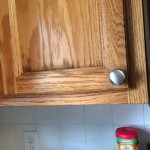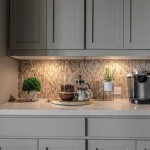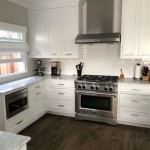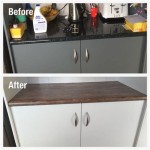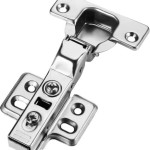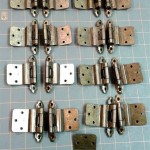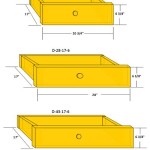How to Put Molding on Kitchen Cabinets: A Comprehensive Guide
Adding molding to your kitchen cabinets can elevate their aesthetic appeal and add a touch of sophistication. Whether you're a seasoned DIYer or embarking on your first cabinetry project, this step-by-step guide will empower you to achieve professional-looking results.
Materials Required:
- Cabinet molding
- Miter saw
- Brad nailer
- 18-gauge brads
- Wood filler
- Sandpaper
- Wood glue (optional)
Step 1: Measure and Cut the Molding
Measure the length of the cabinet face where you want to add molding. Mark the measurement on the molding and use a miter saw to cut a 45-degree angle on each end. For the corners, measure the length of the adjacent molding and cut a complementary 45-degree angle.
Step 2: Dry Fit the Molding
Place the cut molding on the cabinet face to check for fit. Ensure the mitered corners align seamlessly at the corners. Adjust the cuts as necessary for a snug fit.
Step 3: Apply Wood Glue (Optional)
If desired, apply a thin bead of wood glue to the back of the molding. This will provide extra adhesion, especially in areas where the molding will bear weight.
Step 4: Secure the Molding
Use a brad nailer to secure the molding to the cabinet face. Position the brads at an angle toward the center of the cabinet to prevent them from protruding. Space the brads evenly along the length of the molding.
Step 5: Fill and Sand
Once the molding is secured, fill any nail holes or gaps with wood filler. Allow the filler to dry completely, then sand it smooth with fine-grit sandpaper.
Step 6: Finish the Molding
To protect the molding and enhance its appearance, finish it with paint or stain to match your cabinet color. Allow ample drying time between coats.
Tips for Success:
- Use a sharp miter saw blade to ensure clean, precise cuts.
- Clamp the molding to the cabinet before cutting to prevent movement.
- Countersink the brads slightly below the surface of the molding for a seamless finish.
- Sand the molding with a sanding block to achieve an even surface.
- If necessary, use small wood shims between the molding and the cabinet to adjust the fit.
Conclusion:
Adding molding to your kitchen cabinets is a rewarding project that can add character and elegance to your space. By following these steps and utilizing the provided tips, you can achieve professional-looking results that will enhance the beauty of your cabinets for years to come.

Adding Moldings To Your Kitchen Cabinets Remodelando La Casa

Adding Crown Molding To Kitchen Cabinets Young House Love

From Drab To Fab Adding Trim Cabinets

Diy Kitchen Cabinet Upgrade With Paint And Crown Molding

How To Add Trim And Paint Your Laminate Cabinets

From Drab To Fab Adding Trim Cabinets

Adding Molding To Old Cabinets Diy Tutorial Cabinet Doors Kitchen

How To Add Crown Molding Kitchen Cabinets Abby Organizes

How To Add Crown Molding Kitchen Cabinets Abby Organizes

Adding Height To The Kitchen Cabinets Tempting Thyme
Related Posts

